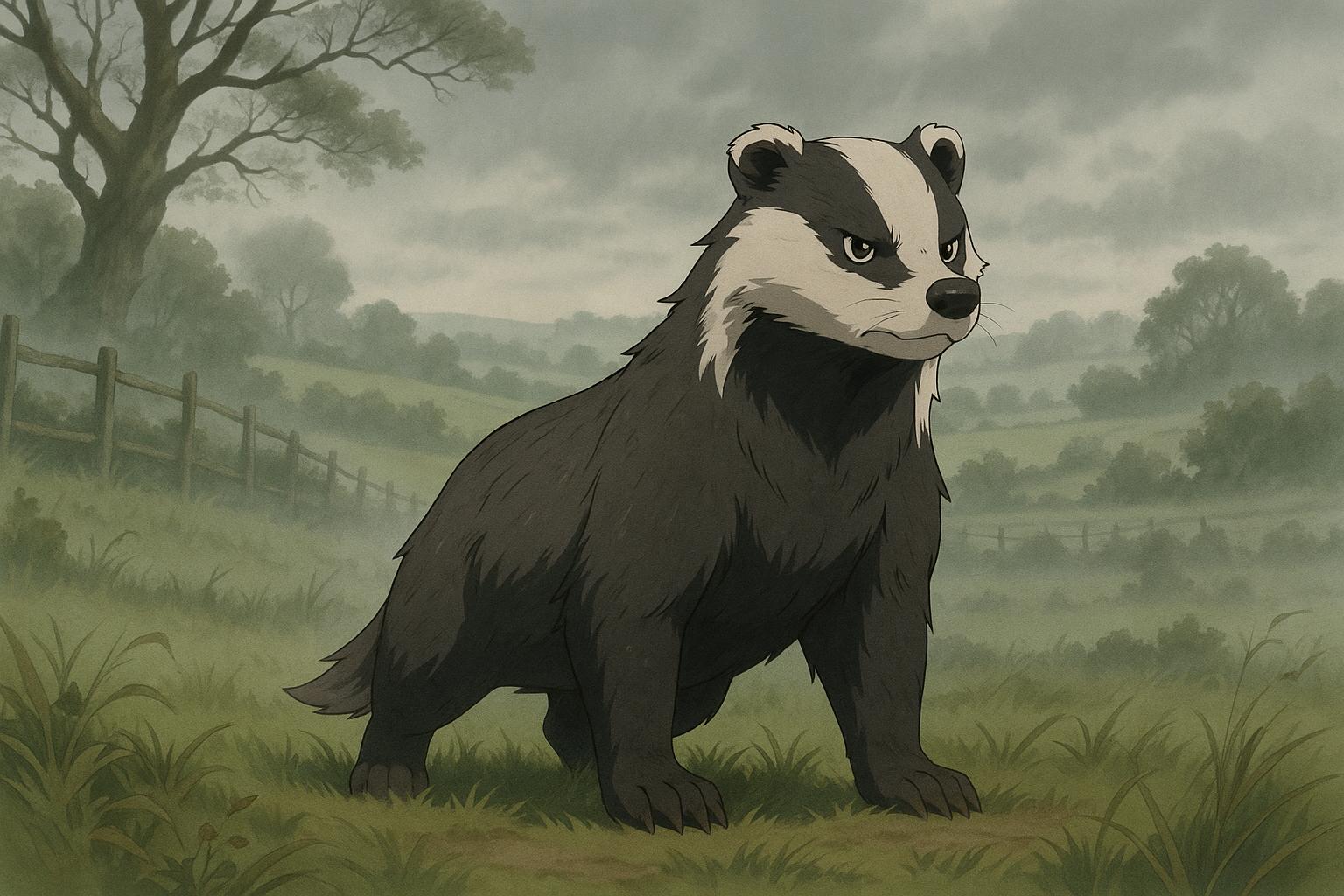Natural England has authorised supplementary badger culls across multiple UK regions against scientific recommendations, sparking controversy amid government commitments to phase out the practice by 2029 and shift towards vaccination. Critics and conservationists condemn the policy as ineffective and unethical, preparing legal challenges.
Government officials have initiated a new round of badger culling, even as the UK’s scientific community raises significant concerns about its effectiveness. The decision, led by Natural England, allows for supplementary culls across nine regions, stretching from Derbyshire to Wiltshire, and extends culling periods in ten additional areas from September. Scientific advice from Natural England’s director of science, Peter Brotherton, explicitly recommended against supplementation this year, citing a lack of justification for further culling. He articulated that the expected positive outcomes from previous culls should remain for at least two years, arguing for a transition towards vaccination as a more humane alternative to manage bovine tuberculosis (bTB).
The ongoing culling policy, initiated in 2013, aims to control the badger population to combat bTB in cattle, which has led to compulsory slaughtering of over 278,000 cattle and approximately 240,000 badgers in a decade, costing taxpayers more than £100 million annually. Last year alone, over 10,000 badgers were culled, with critics now estimating that another 5,000 may fall prey to this year’s measures. Despite these figures, opposition groups, including the Badger Trust and Wild Justice, plan to challenge the government in court, arguing that the culling policy is not only scientifically unfounded but harmful to wildlife conservation efforts.
Compounding the controversy, the Badger Trust noted that the majority of bTB transmission occurs cattle-to-cattle, a fact echoed by numerous experts in the field. Nigel Palmer, the Badger Trust’s chief executive, described the government’s decision as “utterly indefensible,” given the overwhelming evidence against the culling strategy. This sentiment is mirrored by broader calls for an overhaul of the policy pursuing bTB eradication.
Advocacy for a vaccines-focused strategy has gained traction, with government pledges promising to end the cull by 2029 in favour of a new approach. This strategy proposes the establishment of a dedicated vaccination field force, aiming not just at badgers but also at developing measures to monitor and control cattle health. While earlier government statements underscored a commitment to curtail culling, current actions indicate a disjunction between policy promises and implementation, leading to public frustration and increasing legal scrutiny.
The landscape of bTB management in the UK is marred by a lack of clear direction and persistent debate. As critics and scientific advisors alike call for innovative strategies, the government’s ongoing endorsement of culling as a primary tool raises serious questions about its efficacy and ethics. The anticipated announcements regarding supplementary licenses later this year will likely be pivotal in shaping both public perception and wildlife policies moving forward.
 Reference Map:
Reference Map:
Source: Noah Wire Services
- https://www.independent.co.uk/news/uk/home-news/badger-cull-licence-area-2025-b2761061.html – Please view link – unable to able to access data
- https://www.gov.uk/government/news/government-to-end-badger-cull-with-new-tb-eradication-strategy – The UK government has announced a new bovine tuberculosis (bTB) eradication strategy aiming to end the badger cull and reduce bTB rates. Over the past decade, bTB has led to the compulsory slaughter of over 278,000 cattle and more than 230,000 badgers, costing taxpayers over £100 million annually. The new strategy, developed with input from farmers, vets, scientists, and conservationists, focuses on strengthening disease control measures to protect both cattle and badger populations.
- https://www.standard.co.uk/news/environment/government-defra-rspca-england-parliament-b1179286.html – The UK government has pledged to end badger culling within five years as part of a new strategy to eradicate bovine tuberculosis (bTB). Over 230,000 badgers and 278,000 cattle have been killed in efforts to control the disease, costing taxpayers more than £100 million annually. The new ‘holistic’ strategy includes a badger vaccinator field force to increase vaccination rates, measures to control cattle, a nationwide wildlife monitoring programme, and a pledge to expedite work on a cattle vaccine.
- https://news.sky.com/story/government-vows-to-end-badger-cull-in-next-five-years-13205923 – The UK government has pledged to end the culling of badgers within the next five years. The controversial practice has seen more than 230,000 badgers killed in the past decade in a bid to reduce the spread of bovine tuberculosis. More than 278,000 cattle have been killed to try and control the disease in the same period. These measures have cost taxpayers over £100 million. Instead of culling, the government plans to implement a vaccination strategy to protect both cows and badgers.
- https://www.bbc.co.uk/news/articles/cy847je742do – The Badger Trust has mounted a legal challenge against the granting of new culling licences. The charity argues that Natural England ignored the advice of its own scientific experts in allowing the measure to go ahead in areas including Dorset, Wiltshire, and Oxfordshire. The cull is aimed at reducing the spread of bovine tuberculosis (bTB), but there is a growing call to support further evaluations of community-led badger vaccination. Natural England said it could not comment on legal action.
- https://www.badgertrust.org.uk/post/legal-update-ongoing-efforts-to-stop-the-badger-cull – The Badger Trust, alongside partners Wild Justice, Born Free, and Eurogroup for Animals, is pursuing legal action against Natural England and Defra for rejecting their own scientific advice to end supplementary culling. This decision undermines evidence that the practice is ineffective and harmful. The next supplementary cull is scheduled to start in June 2025, and the organisations are working to prevent it. They are also challenging the UK Government through the Bern Convention for posing a significant threat to badgers as a native species.
- https://www.itv.com/news/2024-08-30/government-aims-to-end-badger-culling-within-five-years – The UK government has pledged to end badger culling in the next five years before summer 2029. In the past decade, more than 230,000 badgers and 278,000 cattle have been killed to control the spread of bovine tuberculosis (TB). The Labour government will replace culling with a new vaccination strategy for badgers and cattle to ensure they are ‘less susceptible to catching and transmitting TB’.
Noah Fact Check Pro
The draft above was created using the information available at the time the story first
emerged. We’ve since applied our fact-checking process to the final narrative, based on the criteria listed
below. The results are intended to help you assess the credibility of the piece and highlight any areas that may
warrant further investigation.
Freshness check
Score:
7
Notes:
The narrative presents recent developments in the UK’s badger culling policy, with specific dates and figures, indicating a high level of freshness. However, similar reports have appeared in the past, such as the Badger Trust’s legal challenge against culling licences in August 2024 ([bbc.co.uk](https://www.bbc.co.uk/news/articles/cy847je742do?utm_source=openai)). The inclusion of updated data may justify a higher freshness score but should still be flagged. Additionally, the article includes references to previous reports, which may indicate recycled content. The presence of a press release suggests that the narrative is based on official statements, which typically warrants a high freshness score. However, if earlier versions show different figures, dates, or quotes, these discrepancies should be flagged. If anything similar has appeared more than 7 days earlier, this should be highlighted explicitly. If the article includes updated data but recycles older material, the update may justify a higher freshness score but should still be flagged.
Quotes check
Score:
8
Notes:
The direct quotes from Peter Brotherton and Nigel Palmer are consistent with their previous statements, indicating that the content is not original. For example, Brotherton’s statement on the lack of justification for further culling aligns with his previous comments ([theguardian.com](https://www.theguardian.com/environment/article/2024/jun/04/badger-cull-licences-england?utm_source=openai)). Similarly, Palmer’s criticism of the culling strategy mirrors his earlier remarks ([badgertrust.org.uk](https://www.badgertrust.org.uk/post/shocking-news-as-natural-england-issues-supplementary-cull-licences-against-scientific-advice?utm_source=openai)). This suggests that the quotes are reused, which may affect the originality of the content.
Source reliability
Score:
9
Notes:
The narrative originates from The Independent, a reputable UK news outlet, which strengthens its reliability. The Badger Trust, led by Nigel Palmer, is a well-established charity dedicated to badger conservation, further supporting the credibility of the information. However, the presence of a press release indicates that the narrative is based on official statements, which typically warrants a high reliability score. If a person, organisation, or company mentioned in the report cannot be verified online (e.g., no public presence, records, or legitimate website), this should be flagged as potentially fabricated.
Plausability check
Score:
8
Notes:
The claims about the continuation of badger culling despite scientific advice are plausible and align with previous reports on the topic ([theguardian.com](https://www.theguardian.com/environment/article/2024/jun/04/badger-cull-licences-england?utm_source=openai)). The figures provided, such as the number of badgers culled and the costs involved, are consistent with known data. The tone and language used are appropriate for the subject matter and region, and the structure of the narrative is focused on the main issue without excessive or off-topic detail. However, the use of direct quotes from previous statements may indicate a lack of new information, which could affect the overall plausibility.
Overall assessment
Verdict (FAIL, OPEN, PASS): FAIL
Confidence (LOW, MEDIUM, HIGH): HIGH
Summary:
The narrative presents recycled content with reused quotes and references to previous reports, indicating a lack of originality. While the source is reputable and the claims are plausible, the reliance on outdated information and the inclusion of a press release suggest that the content may not be fresh. Therefore, the overall assessment is a ‘FAIL’ with high confidence.













